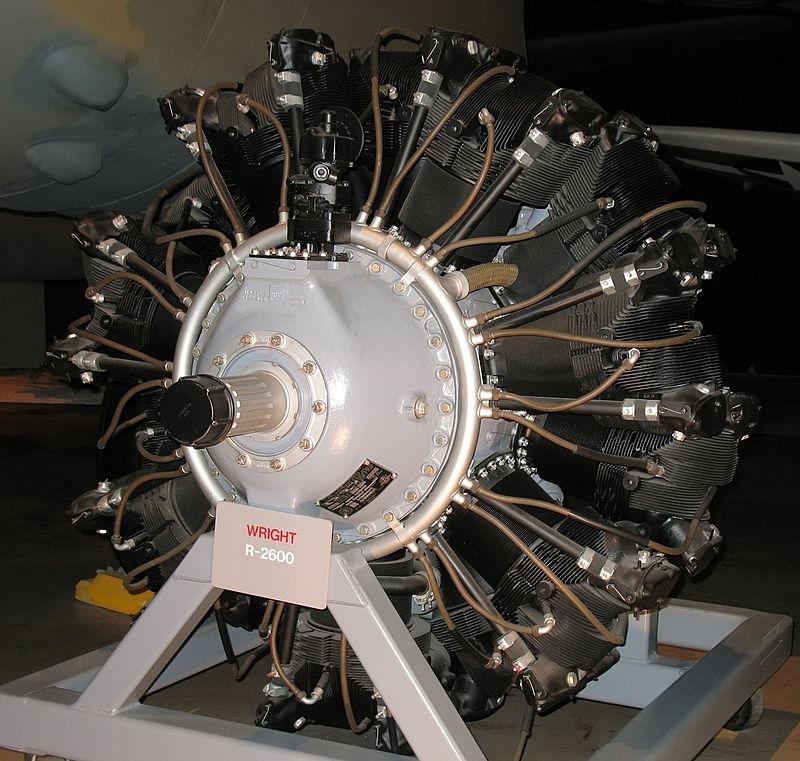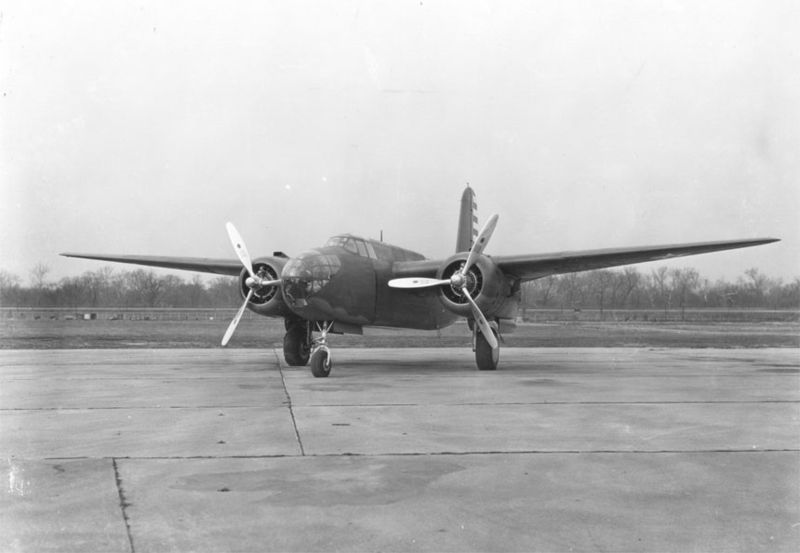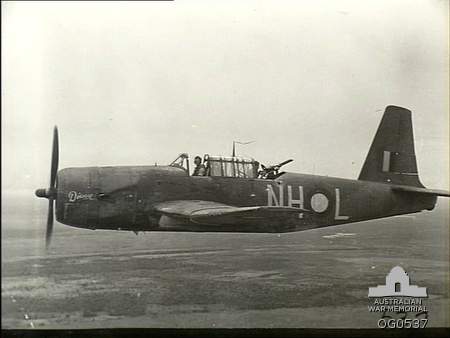
Case History of the R-2600 Engine Project
Compiled by the Historical Office,
Air Technical Service Command (Wright Field), January 1945
Edited and Rewritten by AEHS member Jay Smith
 |
| Wright R-2600 (Wikimedia Commons) |
"Case History of R-2600 Engine Project" documents problems of the Wright R-2600 familiar to those who fly behind Lycomings and Continentals: cylinder corrosion, piston ring wear, excessive oil consumption. The original report, like all ATSC Case Histories, consists of a (9-page) summary, a (37-page) brief, and a file of supporting documents.
The R-2600, designed and produced by the Wright Aeronautical Corporation, originated from the company's specification #439, September 23, 1936. The Air Corps bought one experimental engine for $40,000 in October 1936. The Air Corps Materiel Division tested the engine March 10 to May 24 of 1936. The Chief of the Experimental Engineering Section at Wright Field then recommended the R-2600 as an approved engine type. Authority for Purchase #149860 provided for 467 R-2600-3 engines on contract W535 AC-12061 for $4,857,582.70.
When the contract was placed, the R-2600 was not fully developed and occasioned much trouble before becoming an outstanding engine. There were, as late as October 1943, accessory drive gear failures, cylinder failures (caused by corroded or rusting barrels), supercharger clutch failures, and excessive oil consumption.
Carburetion
One of the earliest problems was that of carburetor failure. The calibration of a model test engine in May 1939 engine test found the Stromberg PD carburetor to be too small. Wright Field requested the development of a larger one. The R-2600-3 series engine failed its 150-hour type test (July 1939), largely because of the PD carburetor: the engine failed to develop 1,350 rated BHP at 5,500 feet or 1,275 BHP at 12,000 feet. Two other carburetors were tried, the Stromberg PD-12J1 and Holley 1685. A Holley carburetor fitted to the Model -9 series engines finally solved the problem. Wright Aeronautical believed that the Holley carburetor (type unspecified) would aid "in curing the…faulty carburetor distribution and overheating" problems. Overheating was not so cured.
Carburetor problems caused R-2600-29 engine failures in A-20K airplanes[1], making them unfit for ferrying, reported the British Air Commission October 1944. Holley HA carburetors replaced Holley HB units, allowing ferrying. The Air Transport Command would not ferry B-25s to Hawaii for the same reason. Installation of Holley HA carburetors permitted ferrying. The carburetors (150) were returned after each trip for reuse!
Cylinders and Oil Consumption
Other hard-to-solve problems were piston and piston ring wear and excessive oil consumption.
In August 1939 during testing a 19-hour test engine failed: number 2 cylinder piston burned through near the exhaust valve, and rings in cylinders 2, 5, 6 and 10 were stuck. New pistons and tapered rings did not solve the problem. Navy testing showed first and second rings broken in number 2 cylinder, the top ring in number 5 cylinder broken and sticking, several top rings beginning to stick, and several second and third rings with tapers worn off.
Thirteen of thirty-three A-20B airplanes[2] (for delivery to Oran, Africa) landed elsewhere in December 1942 because of broken and stuck piston rings and high oil consumption.
 |
| Douglas A-20A (Wikimedia Commons) |
Similar failures happened to other aircraft using the R-2600 engine (B-17, A-31 [3], and A-35 [4]). Reports from Brazil in January 1943 stated that A-31s delivered to Army Air Force bases were mostly "out of commission" from fouled spark plugs and excessive oil consumption. High engine temperature may have accelerated piston ring wear.
 |
| Vultee A-31 Vengeance (Australian War Memorial) |
In March 1943 a Special Piston Ring Committee investigated these failures.
During Army maneuvers in Louisiana seven of twenty-six engines in A-20A airplanes were changed because of high oil consumption. The RAF in June 1943 reported Middle East delivery delays of R-2600-powered airplanes because of a "prohibitive rate of oil consumption." The RAF proposed that oil consumption could be minimized by restricting power during the first ten hours of engine life. The U. S. Army Air Forces had the same idea, earlier.
Cylinder Rust and Corrosion
The most vexing problem was rust and corrosion in the cylinders. The Corrosion Committee, established by CTI-1325 (May 17, 1943) wrote, "We do not know the answer but are beginning to suspect Gremlins." The FBI checked for sabotage. The "epidemic" of December 1942 to March 1943 was corrosion, and that of June-July 1943, rust.
The earliest corrosion complaint came on December 15, 1942 from Army Air Forces Headquarters in North Africa: many A-20 aircraft arrived "at Accra in such condition as to require all cylinders to be changed." "Rust and gum…accumulate[d] in cylinder bases to the extent that ring and cylinder wear accelerated beyond all reasonable service experience." The cause may have been airplanes left for several weeks without engines being turned over or "any other protective maintenance service." The 27th Light Bombardment Group at Baton Rouge, Louisiana found R-2600 cylinders and pistons of A-20s "badly pitted (corroded)", necessitating changing all engines. Welleston, Atlanta, and Memphis complained of "rusty" cylinders. Pratt & Whitney blamed moisture applied to steel parts during engine assembly by ungloved hands.
The Wright Field’s Aircraft Modification Section disagreed. The corrosion varied from rust to severe pitting which feathered the rings. Investigators decided this resulted from "peculiarities incident to the installation in the A-20." Socony Vacuum metallurgists believed the corrosion was from weakness in the [cylinder] nitriding process. The Corrosion Committee recommended compliance with Specification AN-C-80 which should largely eliminate corrosion. Nevertheless the rust problem became serious in June 1943; General Chidlaw wrote (July 23, 1943) General Echols that the corrosion problem was "not yet licked." "This [was] plain old red rust in contradictinction to the corrosion discoloration nitriding problem," General Chidlaw wrote. Depleted stocks of high-alloy steel, it was suggested, necessitated the substitution of rust-prone plain carbon steel. The problem became more serious and the FBI was asked in August to investigate. The FBI reported September 22, 1943 no sabotage. Meanwhile Wright Field's Engineering Division announced August 3, 1943 that a mixture of 75% new oil and 25% rust preventive compound solved the problem. On September 7, 1943 a Memorandum Report specified a modified Bakelite varnish be sprayed and baked on all steel parts.
Other Engine Problems
Other problems surfaced during the third 150-hour model test of April 1940:
In other tests, the staked screws that held the diffuser plate to the supercharger rear housing loosened and entered the impeller.
Quality tests at the Power Plant Laboratory, Wright Field, and at Wright Aeronautical Corporation recommended changes to R-2600-29 engines (replacing R-2600-13 engines in B-25s):
The R-2600-31 engine passed its 150-hour model test (Army-Navy Specification #9502-B) November 1943. Some parts showed "scratching, pitting, or picking out." These weren't considered serious and on January 26, 1944 Wright Field’s Power Plant Laboratory recommended the R-2600-31 for satisfactory completion of the 150-hour model test, except for unsatisfactory wear of piston pins and intermediate impeller shaft bushings.
By November 1944 failures of reduction gear pinion bushings and piston pin retainers in R-2600-B engines were so serious that Wright Aeronautical was holding all engines[5]. All engines shipped after October 25, 1944 were returned to Wright’s Lockland plant for no-cost replacement of unsatisfactory parts. An approved change of design was expected to fix these failures.
R-2600 Engine Production<
Production of R-2600 engines at the Wright Corporations' Lockland plant (Lockland, Ohio) dropped from 1,000 engines a month to only 21% of that by June 1943. This decline was caused by, it was claimed, more rigid inspections imposed after the Truman Committee[6] and Air Force investigations.
Production schedules for R-2600 engines changed several times in 1944. Each change brought serious operating problems to Wright Lockland management, the Company becoming confused, making a production commitment impossible for the R-2600 and R-3350 engines.
Lockland production of R-2600 engines declined in 1944 partly because Wright Aeronautical failed to acquire enough master rods. 4,481 R-2600 engines would be lost from the 1944 schedule, and 867 in 1945.
June 1945 began a plan for gradual reduction of R-2600 engine production at Lockland, to accommodate production of R-3350 engines (rising to 1,000 engines a month by December 1945). Later the Special Advisory Group, Material, Maintenance and Distribution raised the R-3350 production target to 1,200 engines a month by October 1945.
Production of R-2600 engines [at Lockland?]
Endnotes:
1. The Douglas A-20K was a lead ship version of the A-20H and featured a glass nose housing a bombardier's compartment. When the A-20 was used for bombing missions, the solid nose versions of the A-20 (G and H) suffered because neither carried a bombardier. To solve this problem, the Air Corps ordered the A-20K (and A-20J). (“Douglas A-20K.” National Museum of the Air Force)
2. The Army Air Corps ordered 999 Douglas A-20Bs in October 1940. The B model used the same Cyclone radial engine as the last block of A-20As (R-2600-11), but the basic design was more similar to the Douglas DB-7A than the DB-7B, which was the basis for the A-20A. The A-20B was less heavily armed than the A-20A. The forward-firing nose armament was cut in half to two .50-cal. machine guns rather than the four .30-cal. machine guns on the A model. The dorsal mount was reduced to one .50-cal. machine gun, also. The "greenhouse" nose of the B model was based on the early DB-7A design and had a stepped aft edge rather than the slanting rear edge of the other A-20 models. This is the easiest way to identify an A-20B. (“Douglas A-20B.” National Museum of the Air Force)
3. The Vultee A-31 Vengeance was an American dive bomber of World War II, built by Vultee Aircraft. The Vengeance was not used in combat by U.S. units, however it served with the British Royal Air Force, the Royal Australian Air Force, and Indian Air Force in Southeast Asia and the Southwest Pacific. The Vultee bomber remained in service, mainly in the target-tug role, until 1945.
4. After the U.S. entered the war following the attack on Pearl Harbor, a number of V-72 and A-31 aircraft were re-possessed for use by the Army Air Corps. As the Army Air Corps became interested in dive bombing, it decided to order production of an improved version of the Vengeance, designated the A-35, for both its own use and for supply to its allies under Lend-Lease. It was fitted with a more powerful Wright Twin Cyclone R-2600-19 engine and improved armament. As US Army test pilots disliked the poor pilot view resulting from the zero-incidence wing, this was "corrected" in the A-35, giving a better attitude in cruise but losing its accuracy as a dive bomber. (“Vultee A-31 Vengeance.” Wikipedia)
5. Reported by the Power Plant Branch, Procurement Division, Wright Field, December 14, 1944.
6. …even in times of war, Congress and the public were bothered by shoddy contract performance and possible profiteering. The Truman Committee was established in 1941 to investigate contractors and programs for graft and waste. One major investigation focused on Curtiss-Wright and its Wright engine plant in Lockland, Ohio. A 1943 report criticized the company for having poor management policies and inferior products. This set the stage for a lasting lack of confidence between the company and the government that may well have affected the company's decline in aircraft after the war. (“The Curtiss-Wright Corporation.” U. S. Centennial of Flight Commission)
About the Author
Jay P. Smith, 1946 -
"I've been interested in piston engines since I could hold a pencil and draw cross-section diagrams of fanciful engines, mostly with double-overhead cams and water-cooled. Cylinder cooling fins were just too hard to draw. I began collecting engine histories and manuals in the 1970s, with an eye to publishing a history of aircraft piston engines. Herschel Smith and L. J. K. Setright beat me to it.
I earned my private pilot certificate in 1968 while attending the University of California, Davis. The campus has an airport, University Airport (EDU) and a campus flying club, Cal Aggie Flying Farmers. In 1976 I added an instrument rating, flying with Fremont Flyers flying club at the Hayward Airport in California (HWD). I now fly with the Alameda Aero Club at the Oakland International Airport (OAK), and have served as the club's Treasurer and Newsletter Editor. I was a better editor than treasurer.
I work as a reference librarian at a public library in San Mateo County, California.